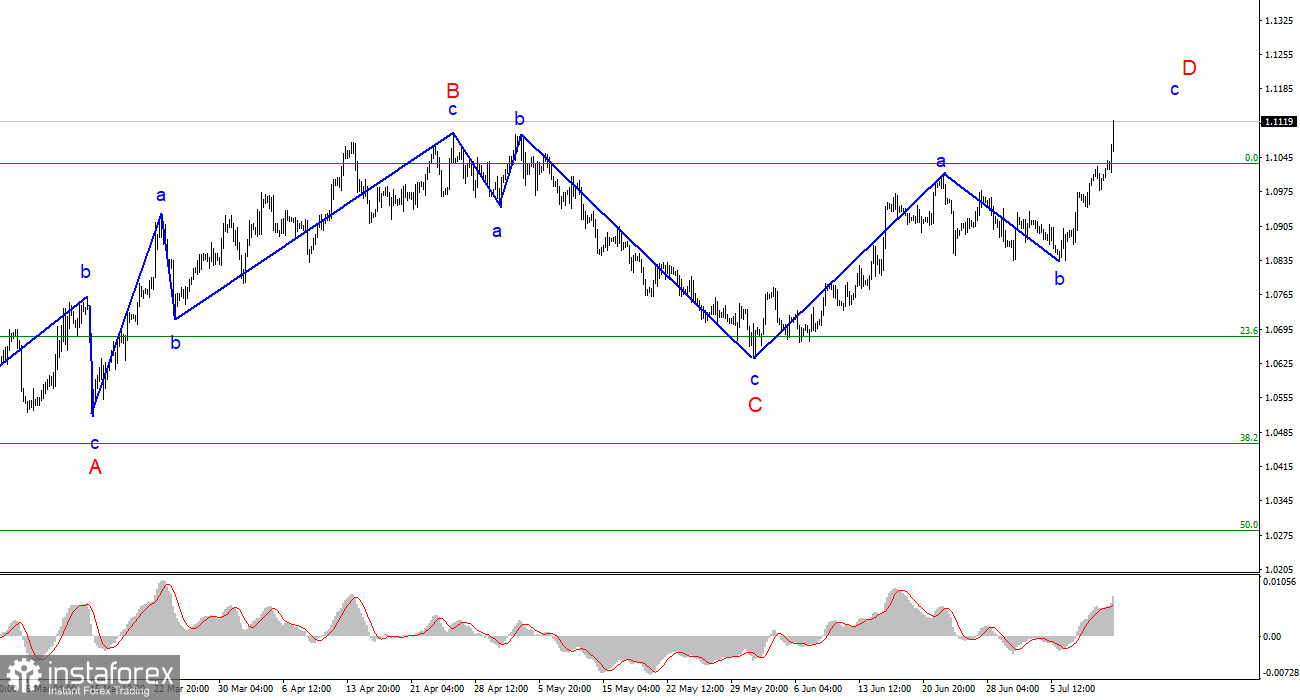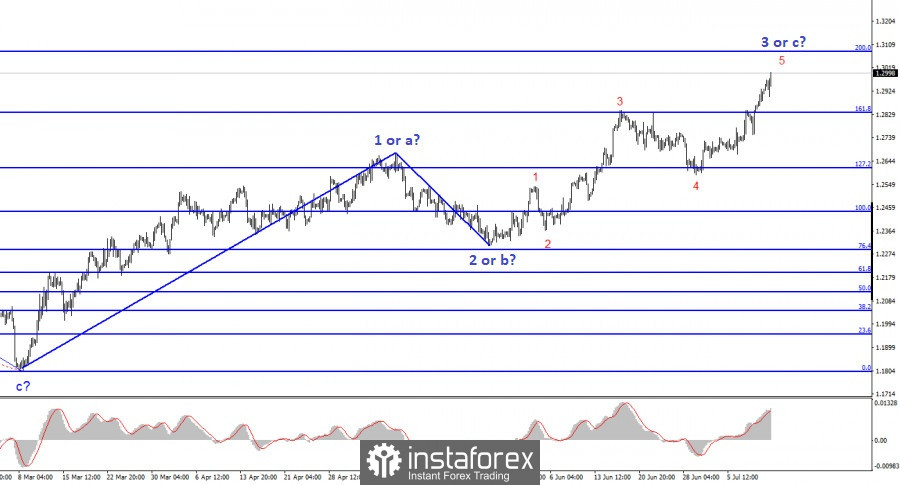The demand for the US dollar continues to fall, although the news background does not always support such market actions. However, on Wednesday, the US currency plummeted for a reason. The US inflation report added a headache for market participants. US annual inflation slowed from 4% to 3% last month, and annual core US inflation cooled to 4.8% from 5.3% in May. Core inflation remains at a fairly high level, which could force the Federal Reserve to raise rates two more times, as Fed Chair Jerome Powell said, but the primary inflation no longer requires two rate hikes.

Commerzbank made a statement saying there is no need to raise the rate twice. The bank's economists claim that inflation in June increased slightly, and market pressure on the Fed is easing each month. In monthly terms, prices rose only by 0.2%. Core inflation also increased by 0.2%, which is the smallest value in the last 2.5 years. The bank believes that the July meeting may be the last at which the central bank will raise rates. Support for the dollar is decreasing as the market has recently been factoring in two policy tightenings.
At the same time, Fed Bank of Minneapolis President Neel Kashkari admitted that rates would continue to rise if inflation is more resilient than expected. He noted that rising rates put pressure on commercial banks and their balances, but as soon as inflation begins to approach the target mark, the Fed will start considering the possibility of easing monetary policy. Notably, this statement was made before the release of the July inflation report. Therefore, Kashkari's view may have already changed to a more dovish one.
Kashkari also recognized the importance of the target level of inflation. According to him, over the last 40 years, anchored inflation has been the foundation of economic growth. The central banks' fight against high inflation should end in success, Kashkari believes. I believe that the demand for the US dollar may continue to fall, as the European Central Bank and the Bank of England have not yet completed tightening. But at the same time, few would argue that all three central banks are close to peak rates.
If the Fed ends its policy tightening, the dollar may get weaker based on the fact that the ECB and the BoE continue to raise rates. Such a picture can be observed for no more than a couple of months, but the dollar will still spend this time in a downward peak. If we talk about the wave markup, then both instruments maintain a high probability of a decline in the near future. The market moves in waves, and after it surges, there should be downward areas as well.

Based on the analysis conducted, I conclude that the uptrend continues. However, the current upward three waves can end at any moment. I believe that targets around 1.0500-1.0600 are quite realistic, and I advise selling the instrument with these targets. However, now we need to wait for the completion of the a-b-c structure, afterwards we can expect the pair to fall into this area. Buying is quite risky. The euro takes every opportunity to rise, but the dollar is not as weak as it may seem.
The wave pattern of the GBP/USD instrument suggests the formation of an upward set of waves. Earlier, I advised buying the instrument in case of a failed attempt to break through the 1.2615 mark, which is equivalent to 127.2% Fibonacci, and now a successful attempt to break through the 1.2842 mark will indicate a complication of the ascending wave 3 or c, hence I advise buying with targets around 1.3084, which equates to 200.0% Fibonacci.





















